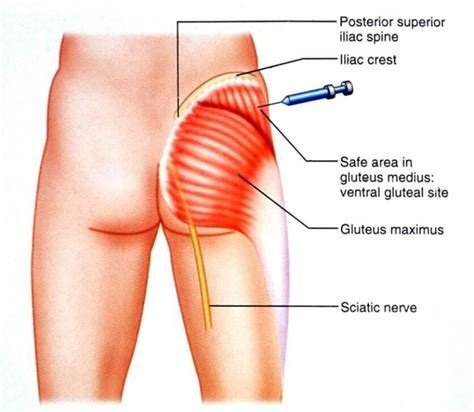What is the best place to inject steroids?

- How Injectable Steroids are Taken
- Oral Steroids vs Injectable
- Benefits of Steroids Injections
- Intramuscular Injections
- Before You Inject
- When You’re Ready to Inject Steroids
- Injecting Into a Muscle Step by Step
- Potential Side Effects from the Steroid Injection
A steroid injection is an injection of a synthetic form of the hormone cortisol. Cortisol is naturally produced in the body, and its primary role is to regulate inflammation. When injected, it helps reduce swelling and pain in the affected area.
There are three types of steroid injections: intramuscular (IM), intra-articular (IA), and epidural. IM injections are given directly into a muscle. IA injections are delivered directly into a joint, and epidural injections are administered into the space around the spinal cord. The type of injection depends on the location and severity of pain or inflammation. Steroid injections can provide temporary relief from symptoms associated with many conditions, including arthritis; tendonitis; bursitis; gout; herniated discs; carpal tunnel syndrome; sprains and strains.
Steroid injections can provide quick relief from symptoms caused by many different conditions. And can improve range of motion and hasten recovery. It’s important to consult with your doctor about any potential side effects before having a steroid injection.
How Injectable Steroids are Taken
Injectable anabolic steroids are commonly taken to increase physical performance, but with the potential for many serious side effects. Most anabolic steroids are taken by injection into a muscle or as tablets. But there are also creams and gels that can be applied to the skin. Taking additional medicines in an attempt to minimize these negative effects is not uncommon amongst anabolic steroid users as they endeavor to maximize their physical performance whilst trying to avoid health risks.
Common methods of taking anabolic steroids include injecting into a muscle, taking pills orally, applying creams or gels directly on the skin, and cycling. Taking the drug for a period of time and then stopping and restarting at a later time.
While some may believe that using these alternative methods can reduce side effects or increase benefits. It is important to remember that no method is completely free from risks. It is therefore essential for users of anabolic steroids to be aware of the potential risks associated with use and take steps to ensure their own safety.
Oral Steroids vs Injectable
HDL is the good cholesterol score that when high can lower blood pressure, and when low can spike BP.
Many oral steroids hepatic lipase, an enzyme present in the liver, that lowers HDL cholesterol. Anadrol, Dianabol and Winstrol are among the worst steroids for heart health. Demonstrating detrimental effects to HDL and LDL cholesterol levels.
Thus, if your main concern is protecting your heart when taking steroids and keeping your blood pressure in check; injectable steroids (particularly Testosterone) are a better option.
However, this isn’t to say injectable steroids cannot spike blood pressure to high levels, because they surely can; especially if the compound is powerful enough (such as Trenbolone). Liver Toxic Orals are also hepatotoxic, meaning they will stress the liver, signified by ALT and AST liver enzymes shooting up.
Benefits of Steroids Injections
Steroid injections can provide numerous benefits for those dealing with chronic pain. They are an effective way to reduce inflammation and offer long-term relief from persistent discomfort. In some cases, they can even be used as a preventative measure against further injury or damage. Steroid injections are an easy and relatively safe form of treatment with minimal risk of serious side effects when administered correctly.
Benefits of steroid injections include decreased swelling, improved joint function, reduced pain, increased mobility and flexibility, and improved quality of life.
Additionally, steroid injections may help avoid the need for more invasive treatments such as surgery or the use of long-term anti-inflammatory medications that may have more severe side effects. For these reasons, many people prefer steroid injections over other forms of treatment for chronic pain.
Intramuscular Injections

Intramuscular injections (IM) are a common type of steroid injection that is administered directly into the muscle. It usually takes about 5-10 minutes for the medication to take effect and can offer powerful benefits for those suffering from chronic pain or inflammation caused by various conditions. Generally, IM injections are safe when given correctly and side effects are rare.
However, it’s important to speak with your doctor about any potential risks before receiving one of these injections. IM injections may be recommended by your physician as part of an overall treatment plan to help manage pain and improve mobility.
Before You Inject
Check the contents of the vial or amp before you draw up– the steroids you buy are often not what they say on the label. If you see bits in the fluid and it’s meant to be clear, for example, do not use it.
Start small– start low and build up until it feels like you’ve got the right dose for you. Avoid copying someone else’s dose – what’s right for them may not be right for you.
Rotate which muscles you inject into– this gives your body time to heal between injections. Never inject into skin that is broken, irritated or lumpy.
When You’re Ready to Inject Steroids
When you are ready to inject, it is important to be sure that your injecting site is clean. You should always wash your hands with soap and water before you inject to help prevent any infections from occurring. It is also essential to use a single wipe of an alcohol swab on the injection area. But make sure not to scrub too hard as doing so will spread bacteria around. Once the area is wiped, allow a minute for your skin to dry before injecting.
Following this method when preparing for an injection can help reduce the risk of infection. As well as providing extra peace of mind knowing that you are being proactive in preventing potential health complications. Best place to inject steroids for maximum results is for sure intramuscular injections. Remembering to clean your hands and the surface where you will be making the injection will significantly improve successful outcomes. While also helping keep yourself healthy by avoiding dangerous infections caused by inadequate sterilization.
Injecting Into a Muscle Step by Step

Injecting into a muscle can be an intimidating process, but it doesn’t have to be. With the right supplies and steps, injections can be administered safely and effectively with minimal discomfort.
Start by gathering the necessary supplies, such as a syringe, needle, medication, alcohol swabs and cotton swabs. The needle should be of an appropriate size for the muscle being injected; typically, a 22- or 25-gauge needle is used for intramuscular injections.
Once ready, clean the injection site with an alcohol swab to prevent infection. Draw up the medication with the syringe at a 90-degree angle to your body before swapping out for a longer blue needle.
Insert this most of the way into the muscle at a 45-degree angle and draw back on the plunger slightly to ensure there are no veins present before proceeding with injecting. Finally, slowly push in the plunger while withdrawing the needle until all of the medication has been administered. After completing these steps your injection into muscle is complete!
Potential Side Effects from the Steroid Injection
When it comes to steroid injections, side effects should not be ignored. Common side effects of steroid injections may include:
- pain,
- redness,
- swelling,
- hair loss
- inflammation at the injection site.
In some cases, patients may experience an allergic reaction to the medication or an infection from improper injection techniques. It is important that healthcare providers take care to use a clean needle and sterile technique when injecting steroids in order to minimize the risk of these complications.
Other more serious side effects such as:
- muscle weakness,
- weight gain,
- issues with blood sugar control can occur with long-term use of steroids and should be discussed with your doctor prior to starting treatment.
By understanding the potential risks involved with steroid injections. You can make sure that you are taking all necessary precautions for a safe and effective treatment.
